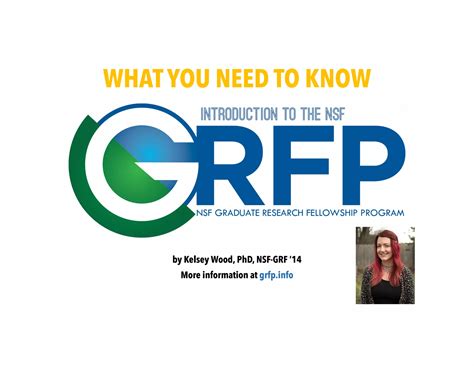The National Science Foundation Graduate Research Fellowship Program (NSF GRFP) is one of the most prestigious and competitive fellowships available to US citizens and permanent residents pursuing research-based master’s and doctoral degrees in science, technology, engineering, and mathematics (STEM) fields.

The program provides three years of financial support, including a $34,000 annual stipend, $12,000 cost-of-education allowance, and access to professional development opportunities.
NSF GRFP fellowship results are announced in April of each year, and the application deadline is in early November. The program is highly competitive, with an acceptance rate of only around 10%.
Eligibility
To be eligible for the NSF GRFP, applicants must:
- Be a US citizen or permanent resident
- Have a bachelor’s degree in a STEM field
- Be enrolled in, or planning to enroll in, a research-based master’s or doctoral program in a STEM field
- Have a strong academic record and research experience
Application Process
The NSF GRFP application process is straightforward, but it is important to start early. The application consists of:
- A personal statement
- Two research proposals
- Three letters of recommendation
- Transcripts
- A CV
The personal statement should be a concise and well-written overview of your academic and research experience, as well as your goals for the future. The research proposals should be detailed and well-organized, and should clearly articulate your research interests and plans. The letters of recommendation should come from individuals who are familiar with your academic and research work, and who can attest to your potential.
Selection Process
NSF GRFP applications are evaluated by a panel of experts in the applicant’s field of study. The panelists consider a variety of factors, including the applicant’s academic record, research experience, research proposals, and letters of recommendation.
The selection process is competitive, and the fellowship is awarded to the applicants who demonstrate the greatest potential for success in their field of study.
Benefits of the NSF GRFP
The NSF GRFP provides a number of benefits to its fellows, including:
- Financial support of up to $34,000 per year for three years
- Access to professional development opportunities
- A network of support from other NSF GRFP fellows
- Recognition as a top scholar
The NSF GRFP is a prestigious and competitive fellowship that can provide significant benefits to its fellows. If you are interested in pursuing a research career in STEM, the NSF GRFP is worth considering.
NSF GRFP Statistics
The NSF GRFP is one of the most competitive fellowships in the world, with an acceptance rate of only around 10%. In 2023, the NSF GRFP received over 13,000 applications and awarded approximately 2,000 fellowships.
The NSF GRFP is open to US citizens and permanent residents, and the majority of fellows are US citizens. In 2023, 88% of fellows were US citizens and 12% were permanent residents.
The NSF GRFP is awarded to students in all STEM fields, but the majority of fellows are in the physical sciences, engineering, and life sciences. In 2023, 35% of fellows were in the physical sciences, 32% were in engineering, and 28% were in the life sciences.
NSF GRFP Success Stories
The NSF GRFP has a long history of supporting successful scientists and engineers. Many NSF GRFP fellows have gone on to become leaders in their fields, including:
- Eric Lander, director of the Broad Institute of MIT and Harvard
- Frances Arnold, Nobel laureate in chemistry
- Sheri Fink, Pulitzer Prize-winning journalist
The NSF GRFP is a prestigious and competitive fellowship that can provide significant benefits to its fellows. If you are interested in pursuing a research career in STEM, the NSF GRFP is worth considering.
Tips for Applying to the NSF GRFP
If you are interested in applying to the NSF GRFP, there are a few things you can do to increase your chances of success:
- Start early. The NSF GRFP application deadline is in early November, so it is important to start working on your application well in advance.
- Get feedback from others. Ask your professors, mentors, and peers to review your application materials and provide feedback.
- Tailor your application to the NSF GRFP. The NSF GRFP is looking for applicants who have a strong academic record, research experience, and potential for success in their field of study. Make sure your application materials highlight these qualities.
- Be passionate about your research. The NSF GRFP is looking for applicants who are passionate about their research and who have the potential to make significant contributions to their field. Make sure your application materials convey your passion for your research.
NSF GRFP Timeline
The NSF GRFP application process is a lengthy one. Here is a timeline of the key deadlines:
- Early November: NSF GRFP application deadline
- April: NSF GRFP fellowship results are announced
- June: NSF GRFP fellowships begin
NSF GRFP Resources
There are a number of resources available to help you apply to the NSF GRFP, including:
- The NSF GRFP website: https://www.nsf.gov/funding/pgm_summ.jsp?pims_id=503261
- The NSF GRFP FastLane system: https://fastlane.nsf.gov/
- The NSF GRFP program director: [email protected]
Conclusion
The NSF GRFP is a prestigious and competitive fellowship that can provide significant benefits to its fellows. If you are interested in pursuing a research career in STEM, the NSF GRFP is worth considering.
